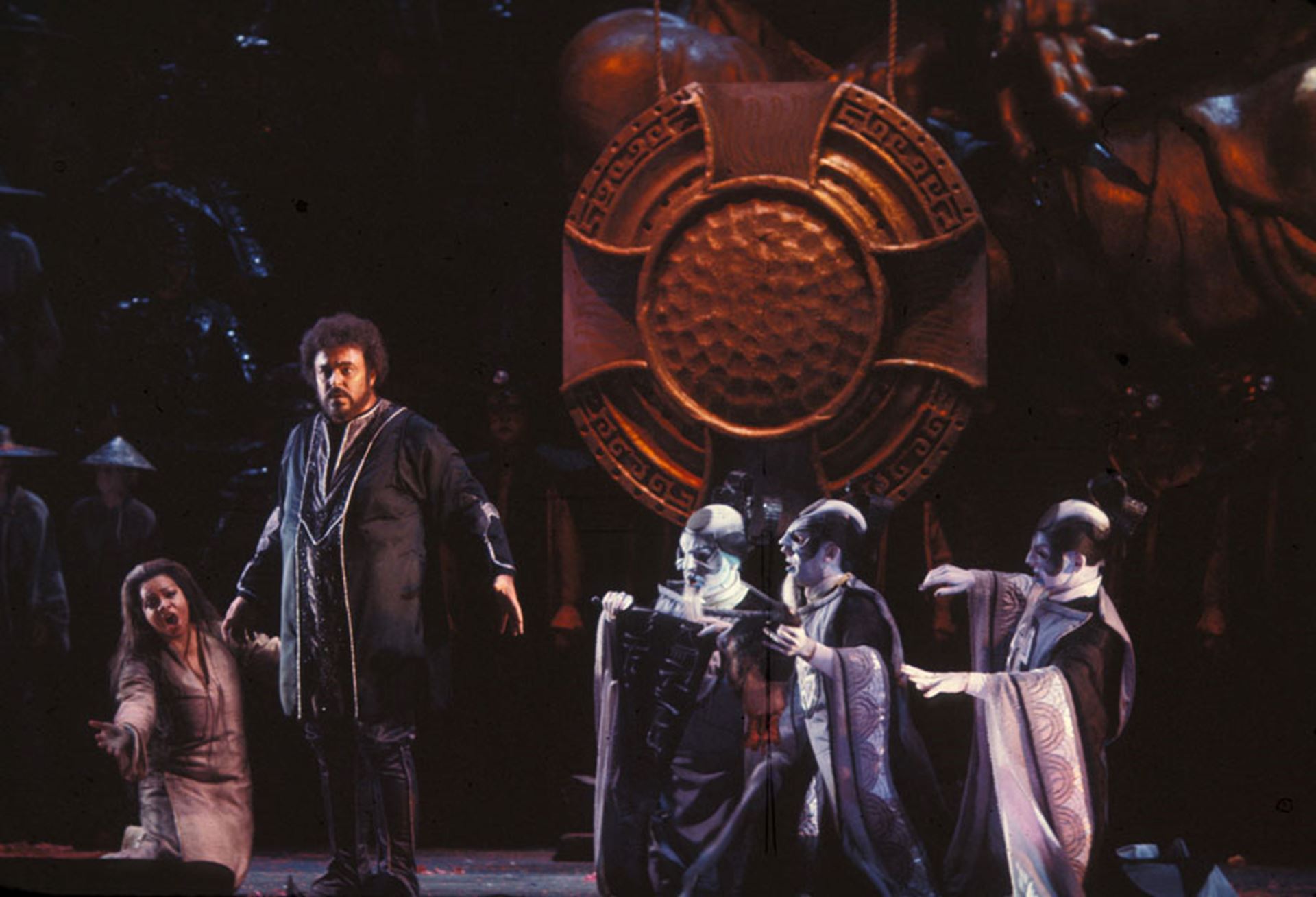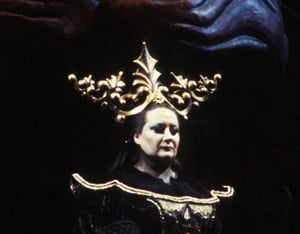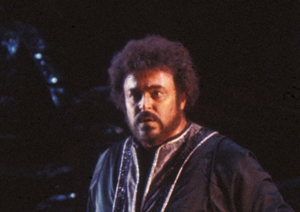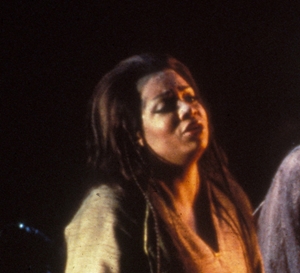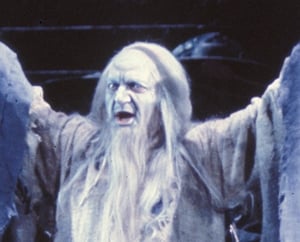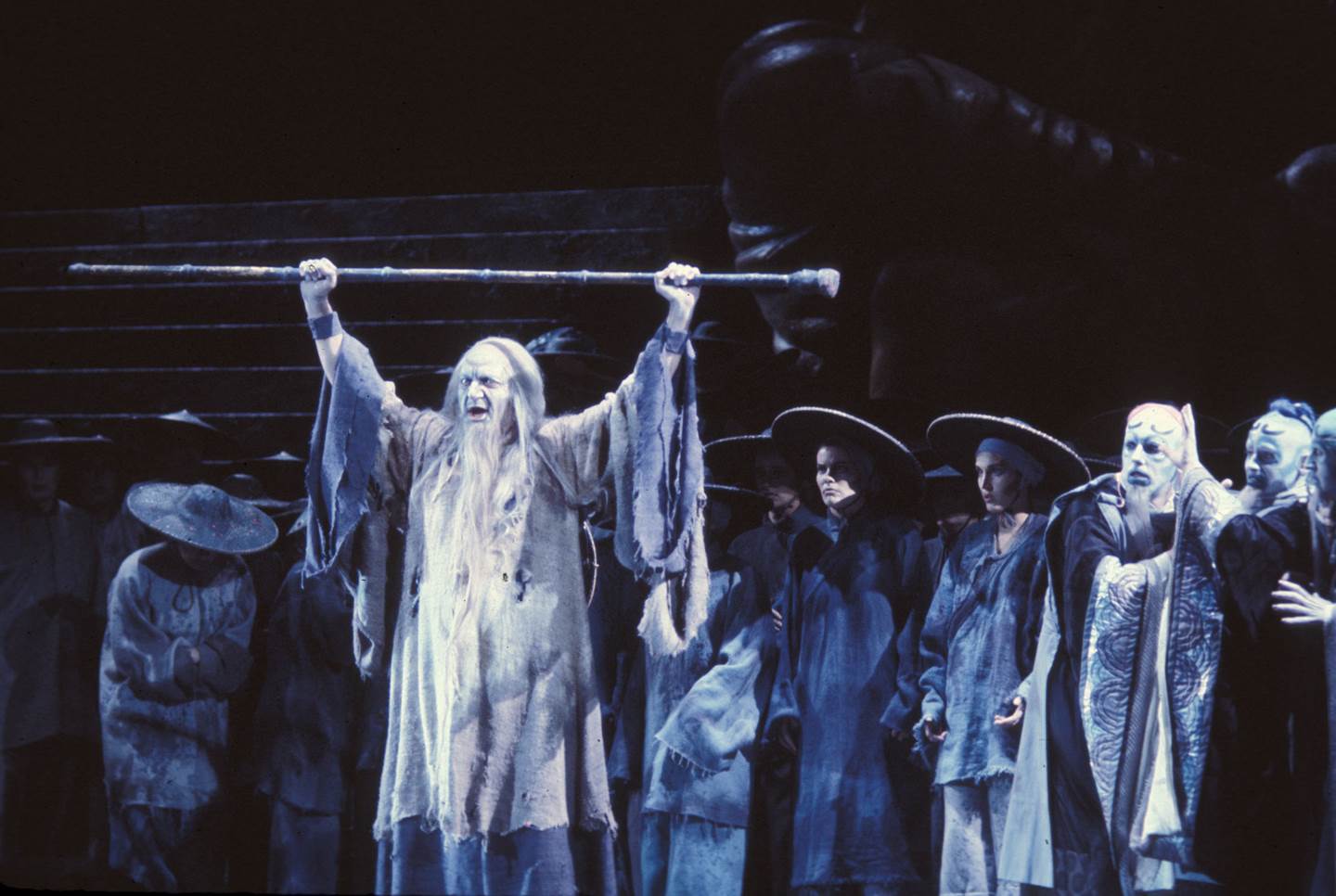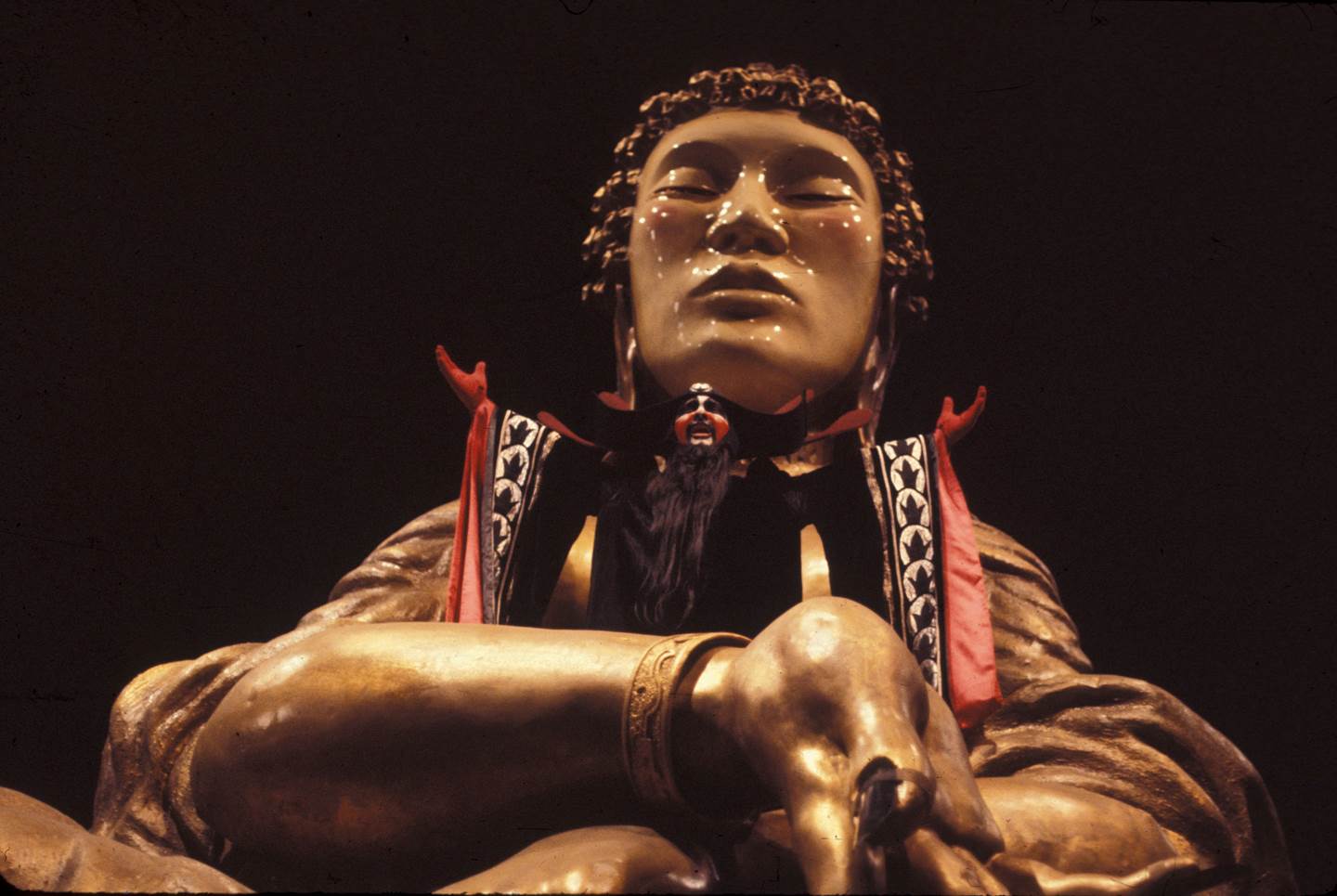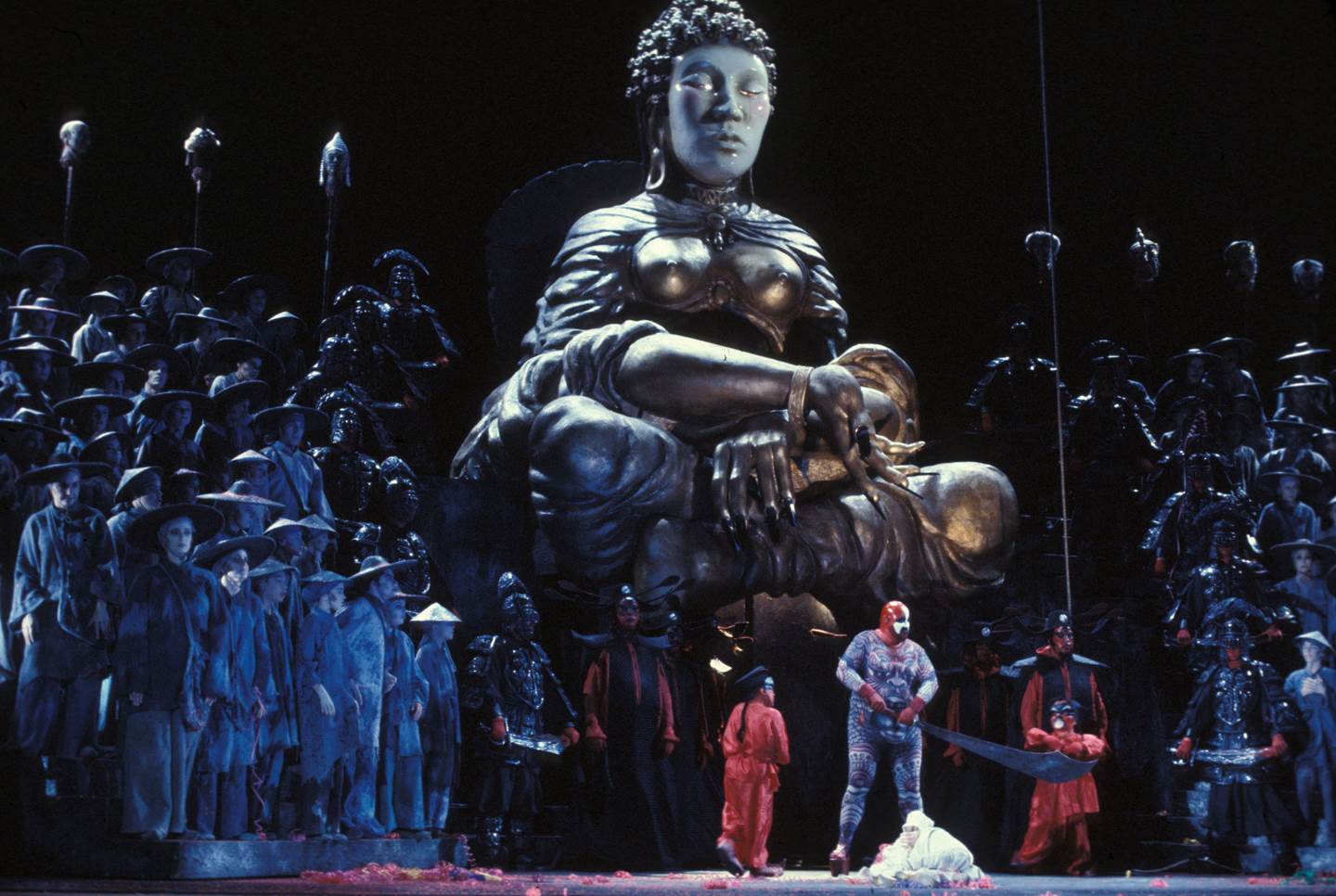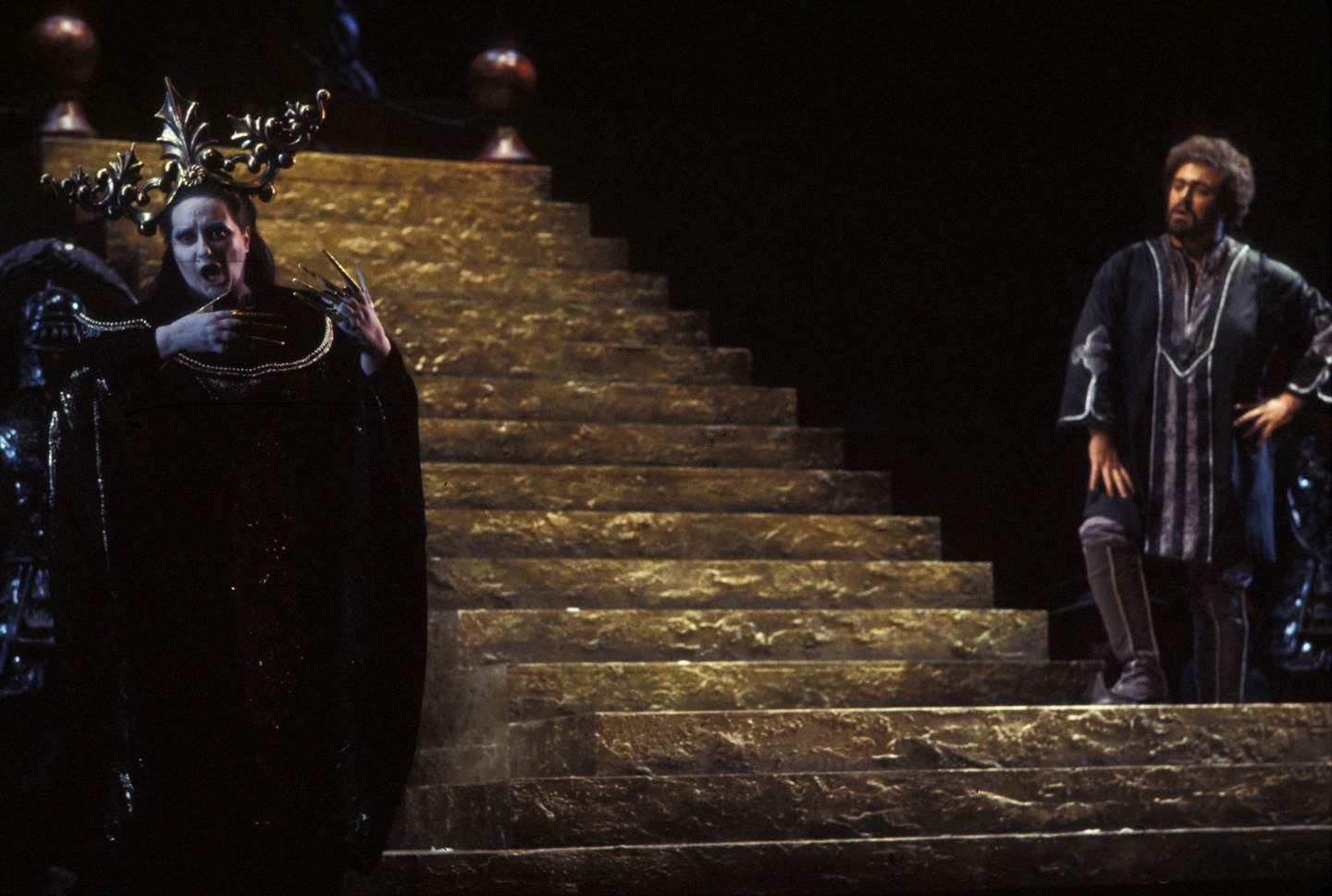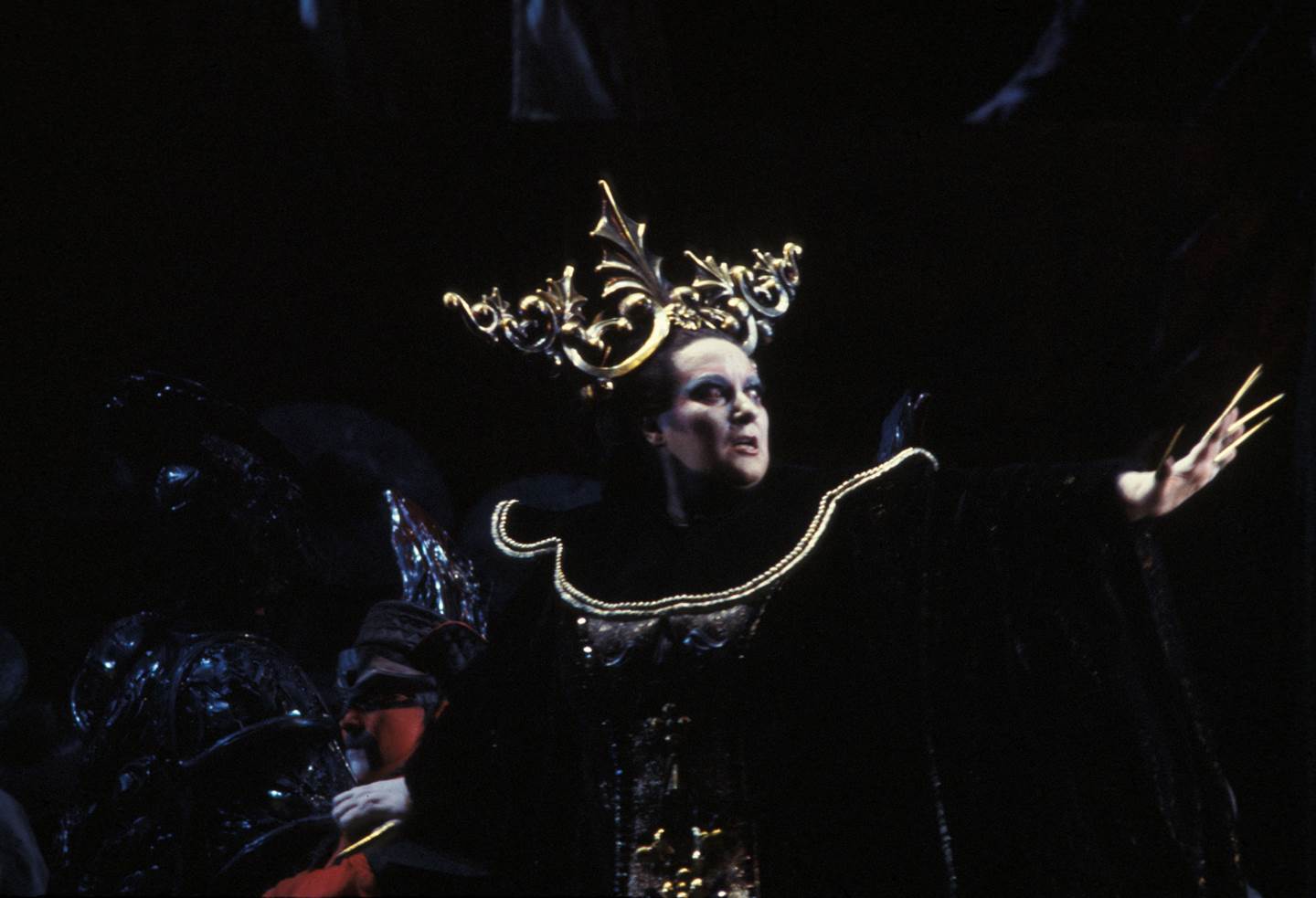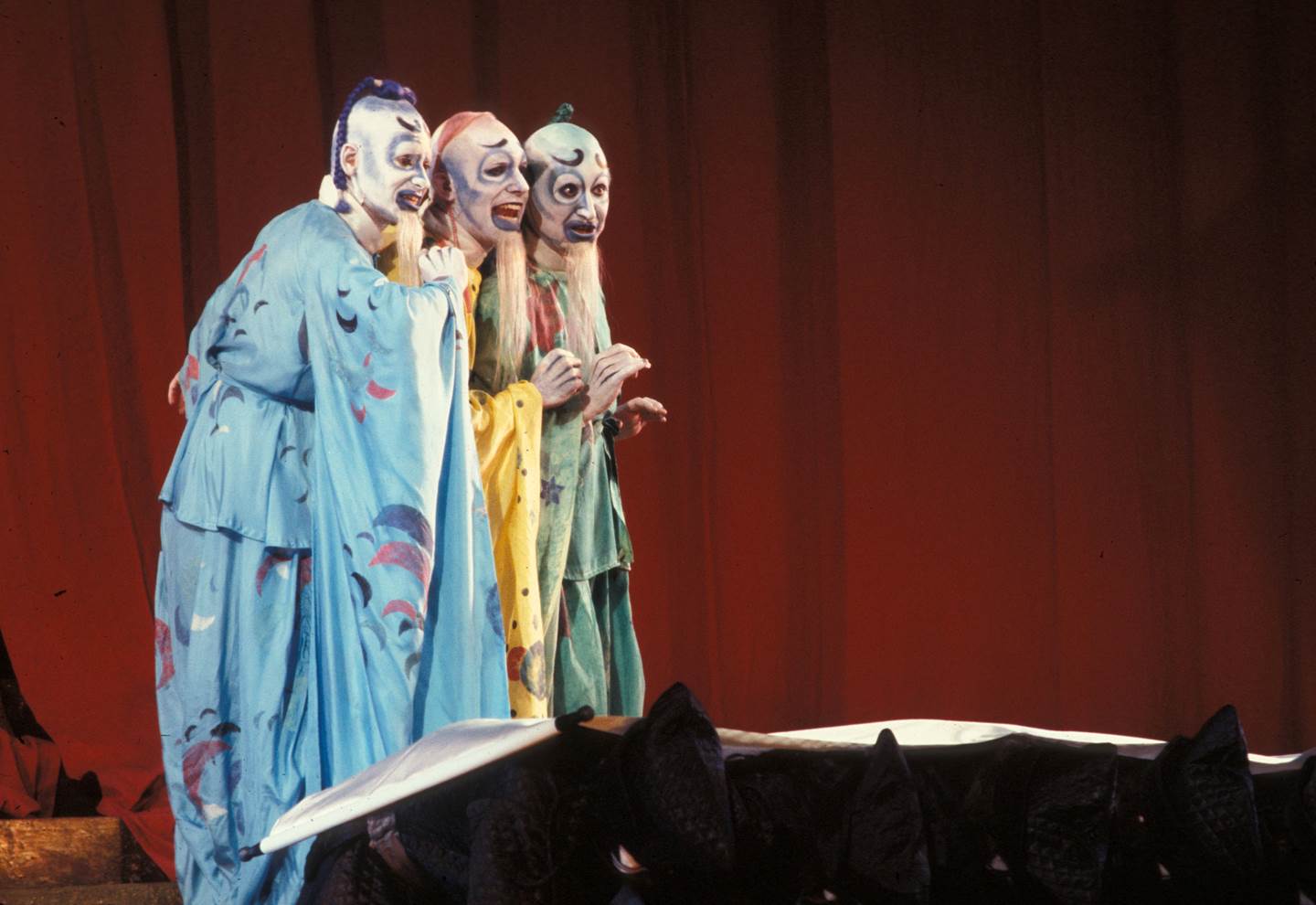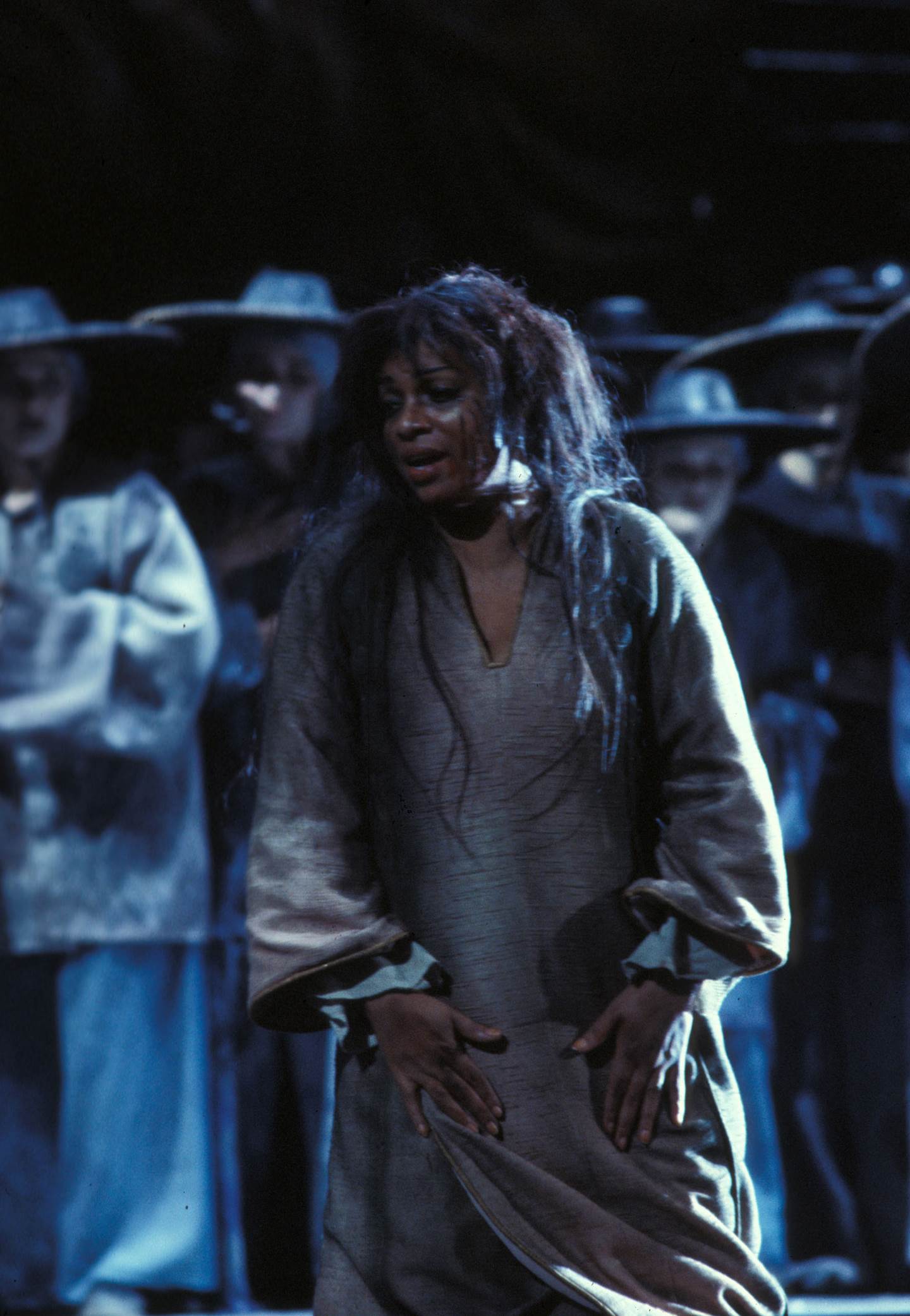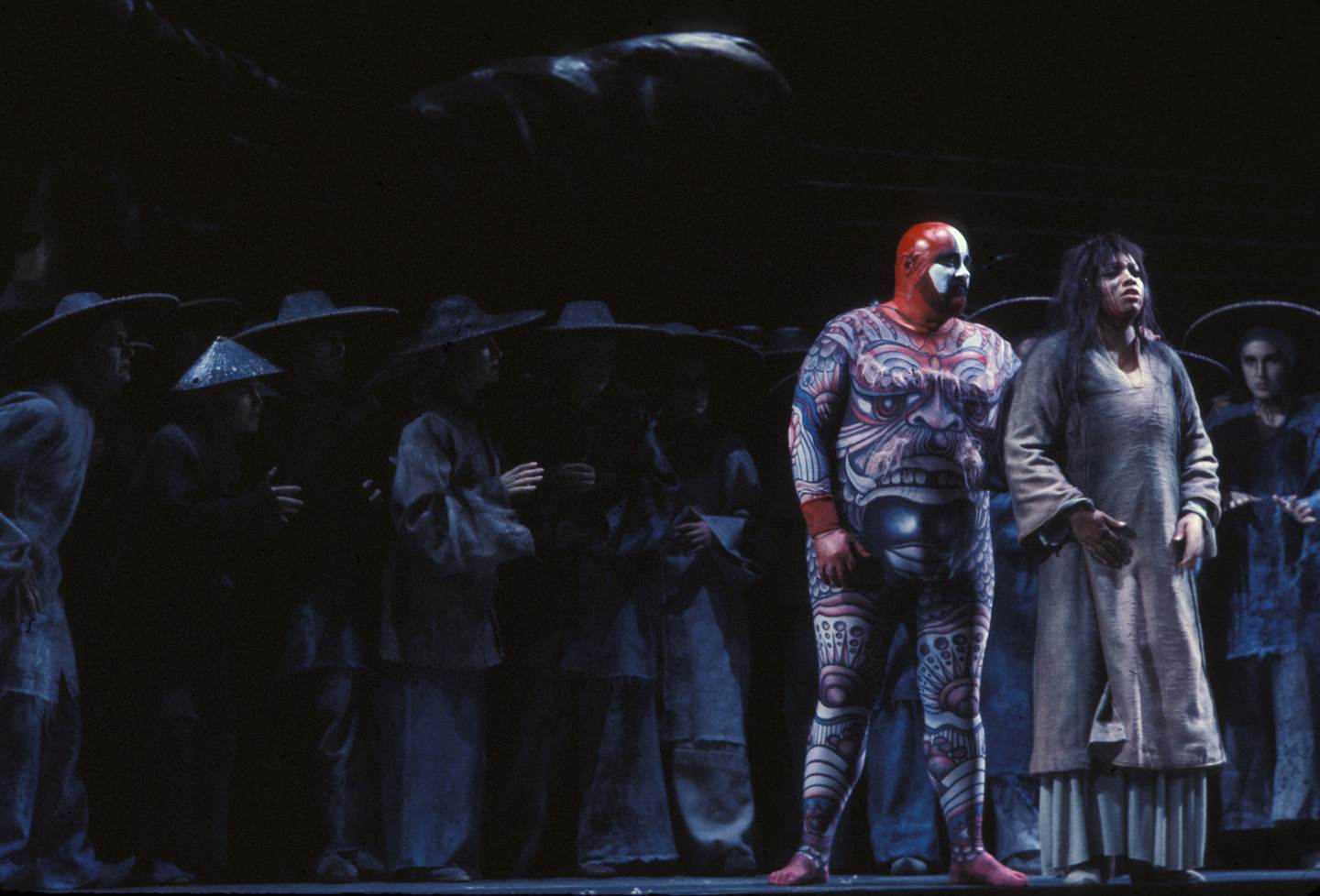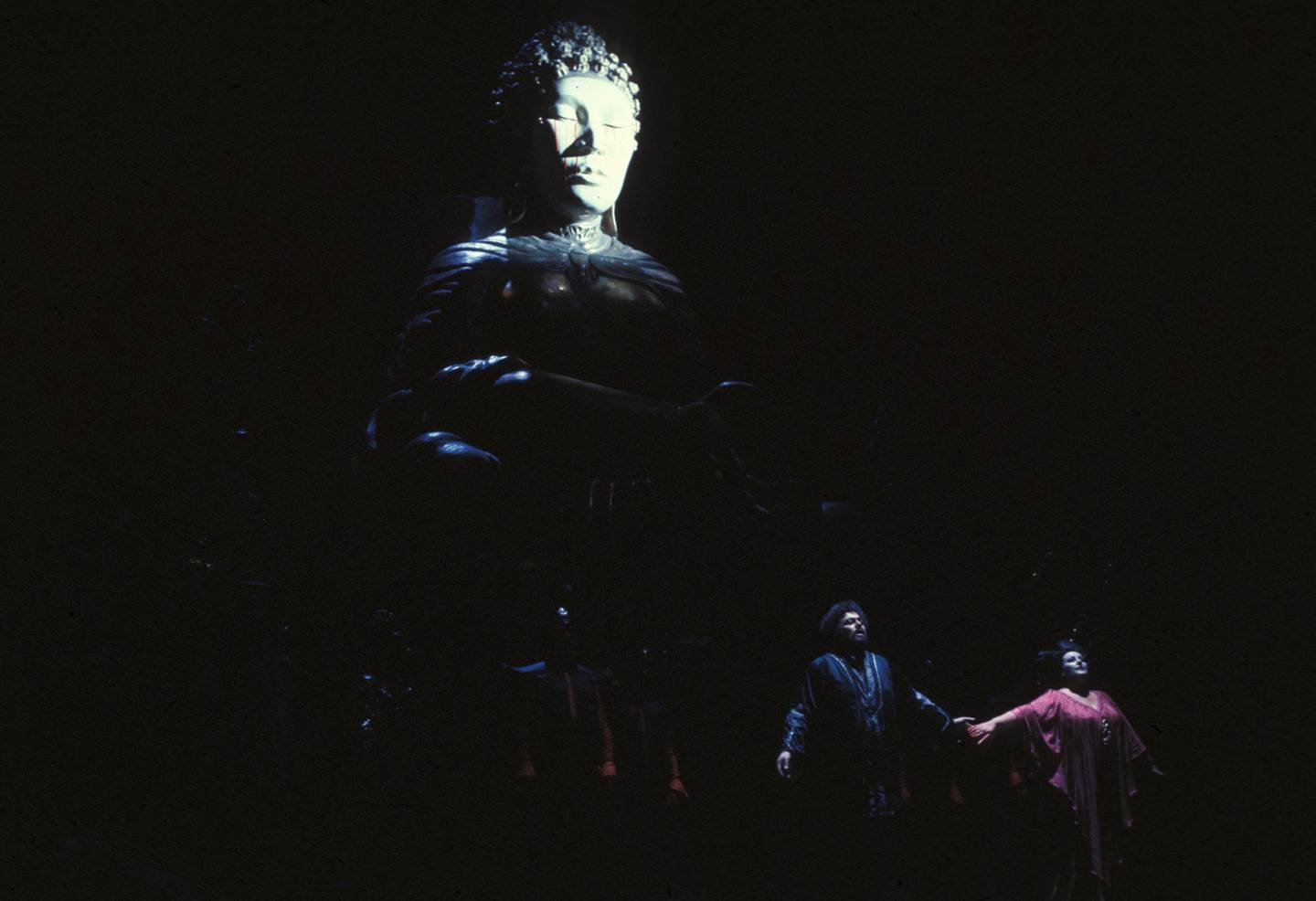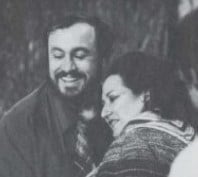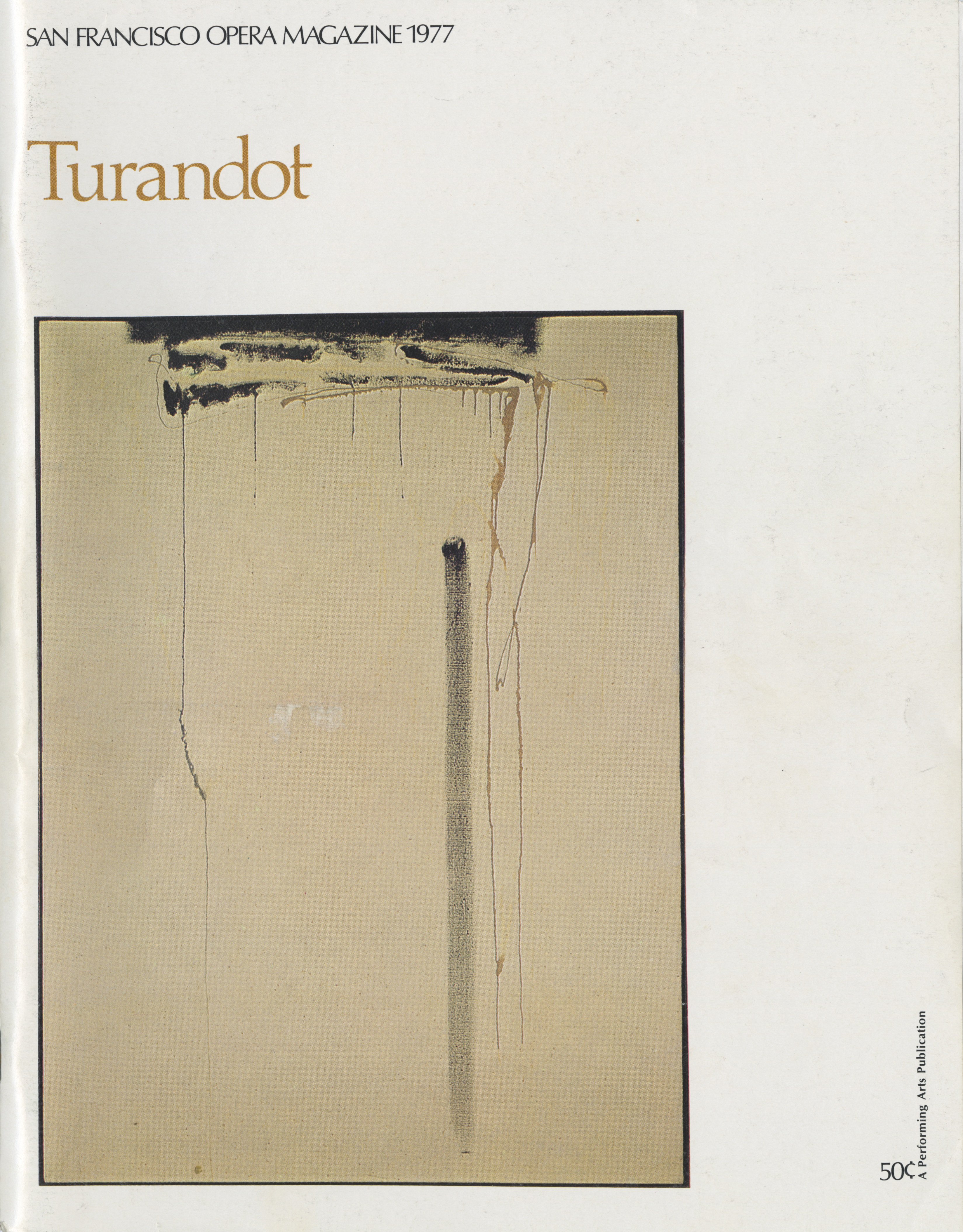Death, Love, Pride, and Prejudice in Puccini’s Turandot
By Mark Burford
(read time ~ 8 minutes)
Even for opera, Giacomo Puccini’s Turandot is awash in death and rumors of death. The opening curtain reveals the ancient imperial city of Peking, China, whose ramparts exhibit the heads of Princess Turandot’s decapitated suitors, mementos of her pledge to avenge a brutally murdered forebear. Left unfinished due to Puccini’s own death in 1924, Turandot’s score contains the last music the composer ever wrote: a gripping death scene for the slave girl Liù that, according to music historian Michele Girardi, “marked the end of a certain way of composing opera in Italy.” Girardi is but one of several scholars who have embraced the view that Turandot represents the death of a “Great Tradition” of Italian bel canto opera, extending from Gioachino Rossini through Vincenzo Bellini and Gaetano Donizetti to Giuseppe Verdi, reaching its terminus in Puccini.
At the center of this thick counterpoint of demise is a princess we are never supposed to root for. Cruel Turandot. Haughty Turandot. Man-hating Turandot. Ice queen Turandot. She is the creation of eighteenth-century Venetian playwright Carlo Gozzi, who described his 1762 “dramatic fable” Turandot, Princess of China, the inspiration for at least a dozen operas, as “a fairy tale, one of those stories with which grandfathers and wet-nurses entertain the children on a winter’s evening by the fire-side.” In both Gozzi’s play and the libretto presented to Puccini by his collaborators Giuseppe Adami and Renato Simoni, a trial of three impenetrable riddles—and the penalty of public beheading for those who fail the test—is Turandot’s bulwark against marriage. Turandot revels in “the pride of such purity,” though, as an audience, we seem intended to understand her refusal less as chaste or principled than as aberrant and irrational, even inhuman, resulting in physical and social violence imposed by the “princess of death.” Turandot’s resistance—expressed through her repeatedly sung vow “No one will ever possess me!” (Mai nessun m’avrà!)—is eventually broken by an unknown foreigner, the exiled Tartar Prince Calaf, who solves the enigmatic princess’s enigmas but only accepts his victory when she returns his feelings of love in a last-second come-to-Eros moment as the opera ends.
Deciding what, exactly, is the moral of the Turandot fable—a tale of life-and-death struggle between unquenchable passion and a steely code of honor—may be the opera’s most perplexing riddle of all. This is due in part to what some consider to be a less than persuasive ending. From a narrative standpoint, the cards were already stacked against Adami, Simoni, and Puccini, who were faced with the challenge of finding a psychologically credible trajectory from Turandot’s continued rebuff of Calaf even after he solves her riddles—“I won’t be yours,” she vehemently protests, except “by force, reluctant, shuddering”—to the eventual amorous union that fairy tales have conditioned us to expect. This problem was complicated further when Puccini died before he could deliver a solution. We know from a letter to Adami that Puccini understood the weighty stakes of Turandot’s transformation; he anticipated that in yielding she would “erupt in expressions of love before the people … excessively, violently, shamelessly, like a bomb exploding.” Instead, the task of finishing the opera, drawing on Puccini’s sketches, was given to composer Franco Alfano, though Turandot’s first conductor, Arturo Toscanini, found the completion too long and insisted that Alfano produce the drastically abbreviated ending most often heard today. At the April 25, 1926 premiere, Toscanini, wanting only Puccini’s music to be heard, laid down his baton after Liù’s funeral procession, telling the audience “Here is where the master died,” thus raising the question of where in fact Puccini’s opera rightfully ends. Regardless, Turandot’s abrupt change of heart, precipitated by the deus ex machina of Calaf’s impetuous kiss, can feel insufficiently motivated, particularly in light of the gravity of her convictions and the self-destructiveness of the prince’s obsession-at-first-sight.
For these reasons, a significant dramatic burden falls upon the soprano in the title role. In San Francisco Opera’s 1977 production of Turandot, conducted by 24-year-old prodigy Riccardo Chailly, the lead roles were sung by two of the opera world’s biggest superstars, both in their prime and admired above all for the sheer sensuous beauty of their voices: 44-year-old Spaniard Montserrat Caballé and 42-year-old Italian tenor Luciano Pavarotti. On a 1973 recording of the opera for London Records with Joan Sutherland and Pavarotti, Caballé sang the role of the sacrificial Liù—described by one critic as “the most heartlessly rejected lover in all of opera” and played in San Francisco by African American soprano Leona Mitchell—but Caballé’s War Memorial Opera House debut was her first Turandot, a heavier, more dramatic part for her lyric soprano voice. As the prima donna, Caballé, particularly in Turandot’s electric duets with Calaf, was tasked with singing and acting that adequately served both the integrity of the character and the denouement of the plot, projecting iron-clad resolve while signaling a capacity for change.
We don’t hear Turandot until the second act, when in her belated entrance aria “In questa Reggia” she recounts her “sweet and serene ancestress” Lo-u-ling who ruled peacefully until she was raped and eventually “extinguished” by a conquering Tartar. Princess Lo-u-ling’s haunting death cry, Turandot sings, echoed “from descendant to descendant” until it “took refuge here in my soul,” instilling a fierce determination to renounce wedlock altogether. However much this may disappoint Turandot’s death-weary father Emperor Altoum, the alternately bloodthirsty and matchmaking crowd, and the commedia dell’arte–inspired ministers Ping, Pang, and Pong—who grumble “Everything went according to the ancient rule of the world, then Turandot was born”—Puccini’s setting of Turandot’s Act II testimony momentarily communicates the nobility, sincerity, and righteousness of her stand.
Elsewhere, the score shifts stylistically from sweeping late-Romantic lyricism to menacing dissonance to attempts at local color—the tune introduced by a boy’s chorus in Act I is based on the Chinese folk song “Mo-li-hua,” harvested from a music box—reminding us less of Wagnerian leitmotiv suggestion than modern cinematic sound worlds. We hear indulgent moments of Puccinian melody in Liù’s suppliant aria “Signore, ascolta” and in the Act III showpiece “Nessun dorma,” Calaf’s anticipation of final triumph after confronting Turandot with a puzzle of his own: discovering his name before dawn. Pavarotti, who made his first San Francisco Opera appearance in 1967, a year before his Met debut, rose to international preeminence singing tenore di grazia roles associated with the operas of Rossini and Donizetti, but he was carefully managing the precarious transition to more rugged, heroic parts like Manrico in Verdi’s Il trovatore, Cavaradossi in Puccini’s Tosca, and Calaf. As Pavarotti told a reporter, “Puccini did not take care of the voice like Bellini.” His 1973 recording of Turandot helped to popularize “Nessun dorma,” tethering the tune to the sound of his voice, though at the time he admitted “I think I cannot sing this opera on the stage for a few years.” The San Francisco Opera production is historically significant for being Pavarotti’s first fully-staged performance of what would thereafter be his signature aria. He was also becoming a qualitatively different kind of opera star. Judged by the growing number of organizations devoted to opera, exploding attendance, and enhanced pop-cultural appeal for singers, opera in the United States was booming as never before. Seventies fandom enveloping Pavarotti’s “Golden Age” voice and affable, media-friendly personality was a sign of the times and an indication of things to come.
But if Cafaf’s heroism is straight out of central casting, Turandot’s may be harder to register. In advance of San Francisco Opera’s 1977 production, a San Francisco Examiner critic offered readers a rather glib explanation of the title character: “Turandot is a vengeful Chinese princess about as pleasant as an iceberg until the right man comes along, to de-freeze her.” In Gozzi’s play, the princess had an alternate perspective on giving herself to Calaf: “The very word ‘wife,’ the mere thought of it, of being his possession, strikes me dead,” she attests, sounding more like a second-wave feminist than a vindictive shrew. So, what is the moral of this fairy tale? Love conquers all? Don’t live in the past? A good man is hard to find? Turandot has always fundamentally been an opera about gender relations, though it undoubtedly has more complex resonance in our own time. Love, death, and honor have been thematic staples throughout opera’s 400-year history, but in the twenty-first century, Turandot skews our vantage point on all three. Our greatest challenge may be finding a way to a Turandot that can be understood beyond the either-or of self-denial and romantic conquest. Puccini’s opera is perhaps less about the inevitability of vanquishing the pride of a stubbornly non-traditional woman than about the outcomes for enamored men who, even in the face of gruesome death, are curiously unable to take “no” for an answer. In this light, we are left to consider, in a manner notably distinct from the opera’s first audiences, whether Turandot’s and Calaf’s ecstatic proclamation of eternal love in the final bars constitutes a happy ending or a guilty pleasure.
Mark Burford is a San Francisco Opera contributor and R.P. Wollenberg Professor of Music at Reed College. His research and teaching focuses on late eighteenth- and nineteenth-century Austro-German concert music and twentieth-century popular music in the United States, with particular focus on African American music after World War II.


